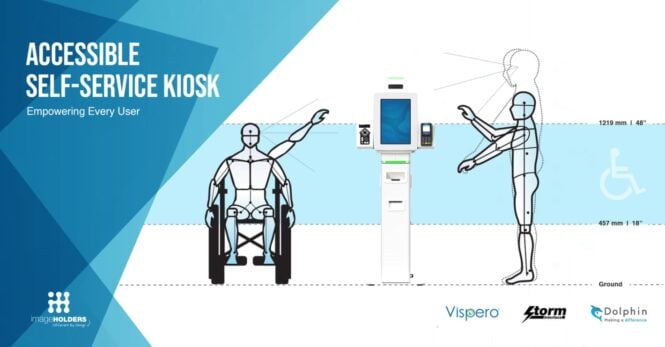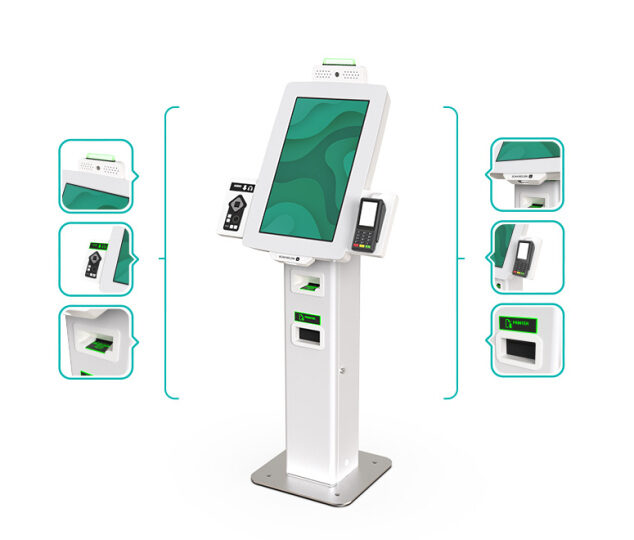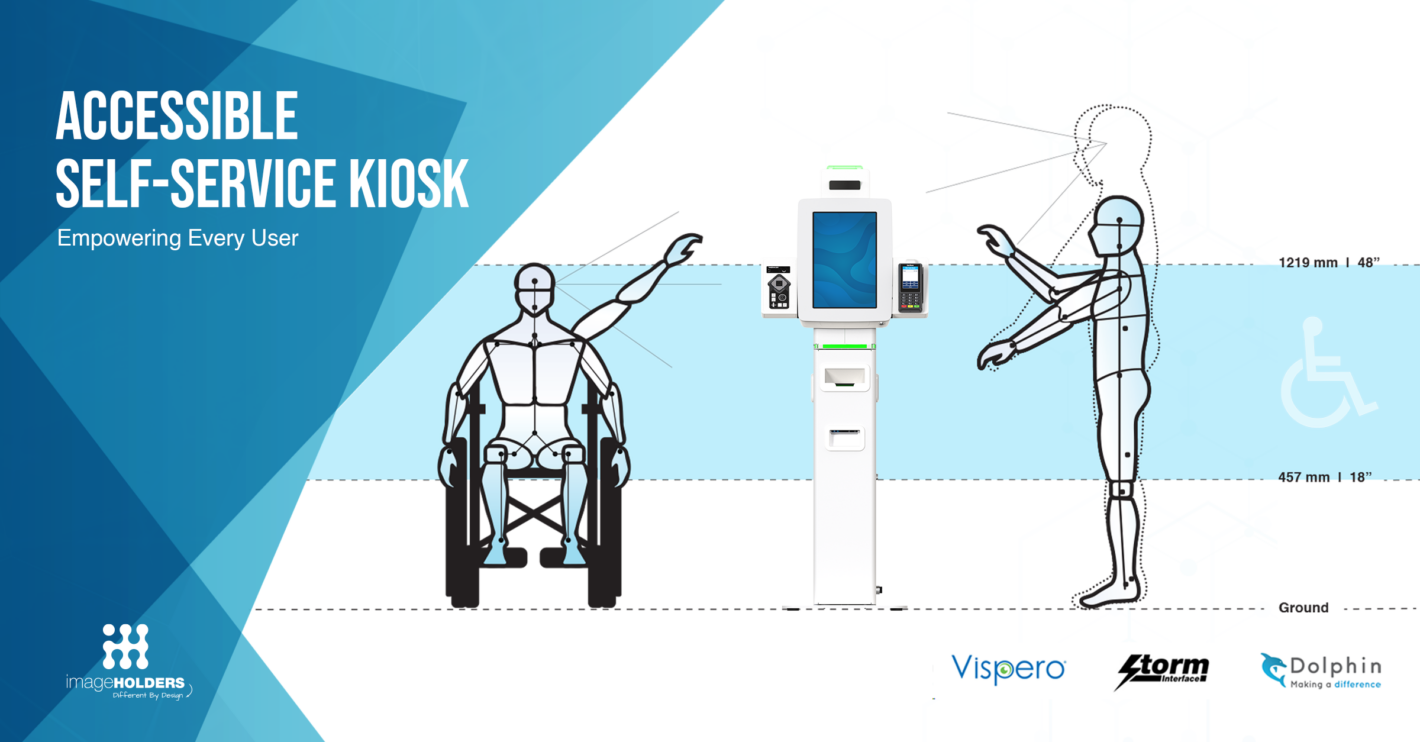
Seven Recommendations for Accessible Kiosks
In today’s transportation landscape, digital kiosks are at the heart of the passenger journey. From ticketing and check-in to payment and information screens, these devices shape how travellers move through airports, train stations and bus terminals. Yet despite their importance, many kiosks are still built around touchscreen-only interactions, leaving entire groups of travellers behind. Full article on imageHOLDERS website. Included is the seven recommendations for being successful in future.

What does TPGi’s white paper say?
Insights from TPGi’s white paper, “The Hidden Barrier in Transportation: Why Your Kiosks May Be Leaving Travelers Behind,” show that kiosks not designed with accessibility in mind create barriers for disabled passengers, older adults, non-native speakers, and anyone navigating stressful or unpredictable conditions, such as glare, noise, or time pressure. What should be a seamless self-service experience often becomes a point of exclusion.
Editors Note: Good advice from the white paper
Actionable Recommendations
-
Test kiosks with real users—including people with disabilities and seniors—in live, busy environments to ensure practical accessibility, not just theoretical compliance.
-
Involve people with disabilities early and continuously throughout the design, development, and testing stages via co-design and direct usability testing with diverse user groups.
-
Write measurable accessibility requirements and performance outcomes into vendor and procurement contracts, such as success rates for people with various disabilities and support for multimodal interfaces (screen readers, tactile buttons, mobile, voice, etc.).
-
Conduct comprehensive reviews of both kiosk accessibility (hardware/software) and organizational readiness, including identifying points of abandonment or high support requests, assessing environmental factors impacting usability, and evaluating internal accessibility policies and practices.
-
Prioritize upgrades for high-traffic, outdoor, older, or especially problematic kiosks, with a focus on locations serving vulnerable groups such as seniors or people with disabilities.
-
Make a clear business case for accessibility by connecting improvements to reduced support costs, increased operational efficiency, legal compliance, opportunities for public funding, and improved brand reputation.
-
Invest in modular, flexible kiosk systems that can be updated for evolving technologies, changing standards, and user needs without full system overhauls
The risks of inaccessible kiosks
The consequences of inaccessible kiosk design go beyond frustration. They create operational inefficiencies as staff are forced to intervene, increase support costs when systems fail, and raise reputational risks when travellers are excluded.
Regulators are also raising the bar. In the United States, requirements under the Americans with Disabilities Act, the Air Carrier Access Act and Section 508 mandate that self-service technology must be accessible to all. In Europe, the European Accessibility Act places similar obligations on transport providers and manufacturers. Inaccessible kiosks are no longer a grey area, they are a compliance issue, and failing to meet accessibility standards risks legal and financial penalties.
Multimodal design offers a better way
The whitepaper highlights a clear path for improvement through multimodal design. This approach equips kiosks with multiple ways to interact and receive feedback, ensuring inclusivity in real-world environments.
Examples include tactile buttons that support blind or low-vision users and anyone who finds touchscreens difficult to operate. Voice commands that make kiosks usable for travellers carrying luggage or using mobility aids. Tap-to-pair mobile access that allows passengers to control a kiosk through their own device. Screen reader integration and audio cues to make on-screen content accessible. Multilingual displays and haptic feedback that support diverse audiences and give users confidence that their actions are successful.
Multimodal design is not an add-on. It is about embedding accessibility into the foundation of every kiosk, anticipating the diverse needs of travellers before barriers arise.
Why transport needs accessible kiosks
Transport hubs are uniquely demanding environments. Lighting shifts, noise levels spike, queues build quickly and passengers are often rushing against the clock. In these conditions, a kiosk that only works under ideal circumstances falls short.
Multimodal kiosks provide resilience. They offer alternatives when one input fails, improve speed by letting travellers choose the most intuitive method, and ensure dignity by allowing more people to complete tasks independently. For transport providers, this translates into smoother operations, fewer support bottlenecks and stronger compliance by design.
ImageHOLDERS designs accessibility in from the start
At ImageHOLDERS, accessibility is built in from the beginning. We design kiosk enclosures and systems that integrate assistive technologies such as voice activation, gesture control and inclusive layouts. Our focus is on delivering kiosks that not only meet compliance requirements but also improve real-world travel experiences for all passengers.
One of our recent successes is our partnership with RNIB to deliver accessible self-service solutions, demonstrating how inclusive design can transform user experience and compliance in public kiosks.
As long-standing accessibility partners of TPGi, we combine expertise in kiosk design with specialist accessibility knowledge. Together, we help operators adopt multimodal approaches that balance speed, independence and inclusivity.
Future-proofing self-service infrastructure
The future of travel is digital, but it must also be inclusive. Transport providers that adopt multimodal accessibility now will not only meet today’s regulations, they will also set tomorrow’s standards. Accessible kiosks are more than a compliance measure, they are an opportunity to lead in customer service, innovation and digital equity.
If you are ready to explore how accessible kiosk solutions can future-proof your infrastructure, improve passenger experiences and strengthen compliance, contact the ImageHOLDERS team. Together we can ensure no traveller is left behind.








